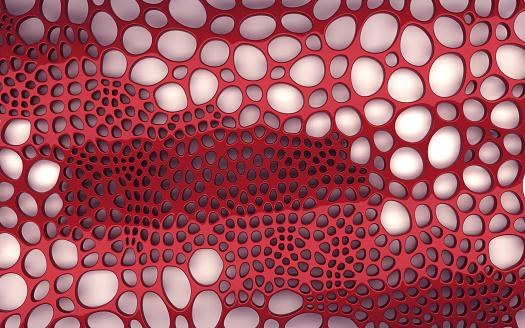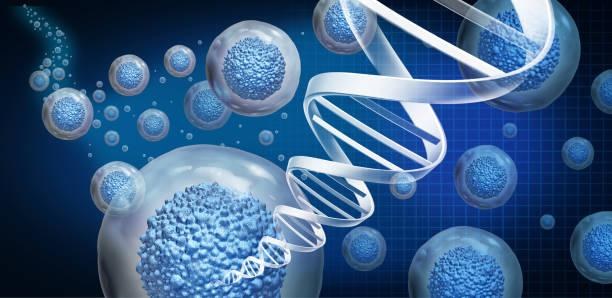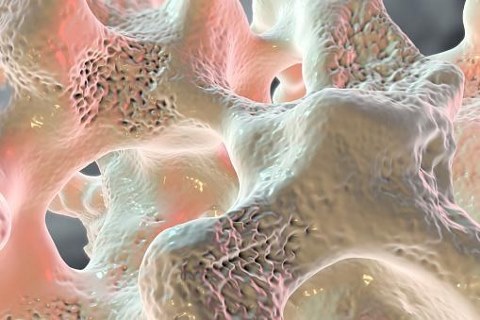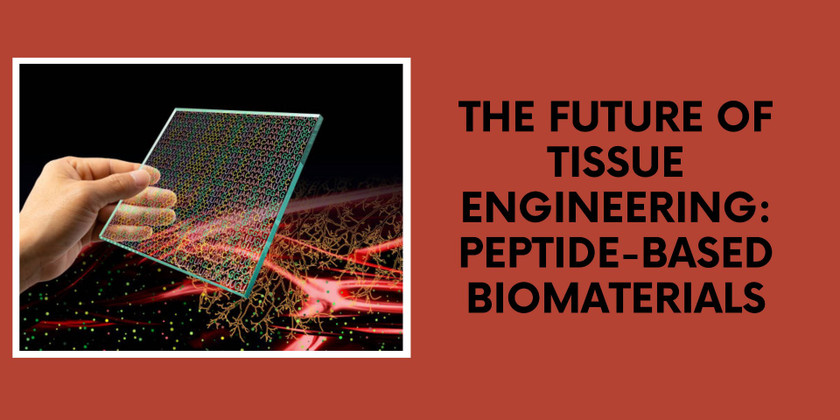The Future of Tissue Engineering: Peptide-based Biomaterials
May 8th 2023
The Future of Tissue Engineering: Peptide-based Biomaterials
The medical and research fields have experienced significant technological growth. Most biological processes are becoming simpler each day due to advanced technology. Additionally, more inventions and discoveries are being realized. Scientists can now efficiently study organs, cells, and tissues and their role in the body.
For example, the improved recombinant antibody production process has made it easier for large-scale production, which is used in manufacturing medicines and vaccines.
Major biotech fields like protein production have also experienced a paradigm shift. Scientists can now get specific proteins through protein production and protein expression services for their research and medicinal use.
Moreover, tissue engineering has made tremendous and promising steps over the last few years. The field is still evolving rapidly, and the future seems luminous. With the current development, it’s possible to control cells and their surroundings easily. Additionally, tissue engineering allows the synthesis of living organs and tissues for clinical use.
Some technologies and trends that led to these significant impacts in tissue engineering include new stem-cell sources, smart biomaterials, vascular engineering, advanced 3D bio-printing, micro-fluid-based physiological platforms, and bioreactors.
However, the field also faces significant challenges, such as reduced immunogenicity of tissue engineering and regulatory handles, among others.
The following article will focus on tissue engineering, looking at the future of these promising fields.
What is Tissue Engineering?
Let's start by defining what tissue engineering is. This biomedical engineering field applies the combination of cells, ideal biochemical and physicochemical factors, material techniques, and engineering to restore, improve, replace, or maintain various types of biological tissues.
Tissue engineering primarily involves the application of cells on the tissue scaffolds to form new viable tissues, which are used in medicines and other purposes. For some time, tissue engineering was classified as a sub-field of biomaterials. However, due to great improvements, growth in scope, and applications, it's now considered a field on its own.
But how does tissue engineering work? Defining and knowing the scope and application of tissue engineering is insufficient to give a clear picture of the whole field. The essential thing is to understand how it works.
According to the definition, tissue engineering has various applications, including repairing or replacing tissues like bone, blood vessels, bladder, cartilage, and muscles.
To ensure proper functioning, these tissues require specific structural and mechanical properties. Tissue engineering works with the immune systems to fight against bacteria, viruses, and other disease-causing organisms.
This is why antibody production, a significant component of the immune system, is essential in tissue engineering. Scientists who want to study the property, functions, and role of antibodies in tissue engineering use custom antibodies.

Tissue Engineering Versus Conventional Grafting
Tissue engineering is an ideal alternative technique to conventional grafting. By definition, grafts are surgical processes tailored to move tissues from one location to another or from one patient/donor to another. The process is meant to replace damaged bone, skin, nerves, cartilage, or cells with function and healthy ones.
On the other hand, biomaterials used in tissue engineering include cells, scaffolds, and bioactive molecules. Combining these synergistic proves to be the safest and ideal tissue regeneration and repair method.
The interest in tissue engineering has significantly increased due to many chronic diseases, the unavailability of donors for conventional grafting, and the challenges or limitations of medical transplants.
The primary aim of tissue engineering biomaterials is to enhance tissue regeneration in patients through cell-free supports modified with bioactive molecules or a combination of these modified scaffolds.

Cells and Scaffolds Used in Biomaterials for Tissue Engineering
Scaffolds are developed to mimic the natural extracellular matrix. They are biodegradable, biocompatible, stable, and porous structures that help to support cellular growth. Natural polymers include elastin, collagen, hyaluronic, and chitosan.
Additionally, there are synthetic polymers used in scaffolds for tissue engineering, such as polylactic acid (PLA), poly-glycolic acid (PGA), and -ε-caprolactone (PCL).
Both synthetic and natural polymers have their advantages and disadvantages. For example, natural polymers have higher biocompatibility but are known to have poor mechanical properties, which lead to premature breakdown.
On the other hand, synthetic polymers are stable compared to natural polymers but have low biocompatibility, leading to high inflammation and probably rejection of biomaterials. Boosting these polymers' compatibility helps reduce the risk of adverse reactions. This is realized through the modification of the scaffold surface with bioactive molecules.
Cells are also essential components of biomaterials in tissue engineering. Adult mesenchymal stem cells, synthesized from bone marrow or adipose tissue, are used as the measuring standards for tissue engineering and regenerative medicine.
They can generate themselves and differentiate into various cell types, making them vital in developing new and healthy tissues.

What are the bioactive molecules used in biomaterials for tissue engineering?
Peptides play a significant role as a catalyst of polymeric scaffolds in all the biomolecules applied in biomaterials for tissue engineering. Peptide-modified scaffolds portray similar features to protein-modified biomaterials. However, unlike proteins, using peptide-based biomaterials in tissue engineering offers tremendous advantages.
For example, peptide synthesis is affordable and uses a more straightforward process than protein expression, peptide modification is simple, has lower immunogenicity than large protein particles, and peptides have small molecules resistant to environmental changes such as PH and temperature.
Due to such advantages, peptides are the ideal bioactive component of biomaterials used in tissue engineering applications. Peptides have different classes that are used as biomaterials for tissue engineering.
These classes are meant to enhance the biocompatibility of biomaterials. For instance, cell adhesion peptides improve cell adhesion, differentiation, and proliferation. On the other hand, BMP-like and VEGF-Like peptides help to mimic proteins by managing bone repair and controlling vessels.
Moreover, self-assembled peptides possess a section. They form a complex 3D structure that helps them to assemble spontaneously through non-covalent bonds, such as hydrophobic interactions, hydrogen bonds, and electrostatic ones. This process can be induced by external factors such as chemical molecules, temperature, or PH.
Similarly, other classes of peptides, such as SAPs, can be synthesized through solid-phase custom peptide synthesis. However, complex non-structures can be developed under physiological conditions, making the process efficient and affordable.
Peptide hydrogel structures can also mimic the extracellular matrix and play the role of scaffolds for tissue-regenerating biomaterials.

What are the applications of tissue engineering?
1. Regeneration of Damaged Tissues
Tissue engineering has been used to overcome the problems associated with damaged tissues. The regeneration of damaged tissues is applied in the following ways in tissue engineering.
- Bone Tissue Engineering
Bones comprise collagen, which can regenerate and repair in response to any injury. Bone graft happens when there are large bone defects due to infection, trauma, resection, or skeletal abnormalities. Therefore, bone tissue engineering proves effective in the regeneration of damaged tissues.
However, it's challenging to produce the features of bones in-vitro. This makes obtaining a perfect scaffold for bone tissue regeneration proves difficult. Nevertheless, scientists have developed 3D porous scaffolds with similar characteristics to the bone, allowing bioceramic scaffolds for excellent compatibility.
Additionally, the osteo-inducive scaffolds apply biomolecular signaling and progenitor cells to form new bones.

- Cartilage Tissue Engineering
Cartilage is tissue connecting cells and other organs found in knees, elbows, and ankles. Like bone engineering, cartilage tissue engineering also faces many challenges. Though many scaffolds have been applied in cartilage repair, synthetic scaffolds such as poly (Ethylene Glycol), polyurethane, and elastin-based polymers are the most commonly used scaffolds.
Cartilage is made up of chondrocytes. Therefore, autologous chondrocytes are a perfect cell donor for cartilage regeneration and repair. However, these autologous chondrocytes are hard to obtain and may require advanced techniques.
Therefore, Mesenchymal Precursor Cells (MSCs) generated from various sources, such as bone marrow or adipose tissue, are ideal alternatives. They can differentiate and proliferate towards adipogenic, osteogenic, myogenic, and chondrogenic lineages and integrated in-vitro.
Besides cartilage and bone tissue engineering, other tissue engineering for damaged tissue regeneration has been done—for example, cardiac tissue engineering, vascular tissue engineering, and pancreas tissue engineering.
2. In-Vitro Human Models for Tissue Engineering
Developing in-vitro human models for tissue engineering is a significant application to examine the role played by various mechanical, physical, and chemical factors in various systems. Some of these applications include;
- Cancer
Precise modeling of the tumor microenvironment is needed to ensure a successful tumor progression process. This happens through a 3D culture, which offers micro-environmental conditions that help manage tumorigenesis. A 3D culture is based on integrating biomolecules, cells, and scaffolds. Both synthetic and natural biomaterials are used in modeling cancer.
- Drug Discovery
3D cultures are introduced in drug screening to help analyze drug action's impact. Moreover, the 3D culture helps hepatocytes regain their key-liver protein expression and morphology.
3. Regenerative Medicines Repair of Damaged Tissues and Organs
Regenerative medicine repair is where the body induces its repair mechanism to treat irreparable organs or tissue. When the body can’t develop this mechanism, the organs or tissues can be developed in the laboratory and implanted. Additionally, Regenerative medicine uses stem cells and tissue engineering through a process known as directed differentiation.
The directed differentiation process begins with developing scaffolds and then introducing cells. A tissue develops in an ideal environment. In other cases, self-assembly may involve mixing scaffolds, growth factors, and cells.
Another technique applied in regenerative medicine is stripping of cells of the donor organ and using all the remaining collagen scaffold to develop new and functional tissues. This method has been effective on liver, heart, kidney, and lung tissue.
What is the future of tissue engineering and regenerative medicine?
With advanced technology, the future of tissue engineering is promising. Similar to how various technologies have boosted the growth and development of tissue engineering as a field on its own, new technologies will drive its progress and expansion.
One of these new technologies is expanding and isolating stem cells and detecting the signals needed for their differentiation. Other emerging technologies include; genetic modification of cells in vivo and in vitro and neural tissue engineering.
These technologies will help solve the challenges experienced when creating adequate tissues to isolate autologous cells.
Moreover, new matrix materials with specific chemical structures and compositions will be developed to ensure they serve effectively as insoluble regulators. Also, introducing new methods to help control the mechanical environment in vitro helps regulate biosynthetic behavior.
All these techniques will ensure the straightforward synthesis of tissue in vitro that mimics the native materials. They also are significant in the preparations of implants to allow tissue regeneration in vivo.
Further, cell proliferation in monolayer culture and related growth in 3D scaffolds for tissue engineering will likely improve and provide many opportunities to assess specific cell behavior. This means the knowledge of cell phenotype will be enhanced, leading to tremendous advancement in regenerative medicine and tissue engineering.
Another research area is the implantation of the human liver in mice. The main aim is to observe the interaction of drugs in mice compared to the human system. Such studies are facilitated by tissue engineering. Moreover, the regeneration of new organs, such as the kidney, are still under investigation.
This will be a significant boost in the tissue engineering field. The power to regenerate new functional kidneys is thumbs up as it will help overcome organ implant challenges, such as donor shortages.
Wrapping Up
Tissue engineering significantly affects lifesaving, tissue and organ repair, and lifesaving processes. It helps to overcome the many shortcomings associated with transplants and allografts. However, tissue engineering is expensive and requires high-level skills, experience, and thorough research.
Nevertheless, technology has made the processes easy and made tissue engineering outstanding. Further advancement and research are ongoing to improve the field and make it more ideal.
Areas such as cartilage, bone, vasculature, heart, and pancreas have shifted tissue engineering to higher levels. This has led to the transformation of the biology field by bringing new processes and therapies. For example, generating custom antibodies, protein production, custom peptide synthesis, and gene synthesis in biology have been simplified.

